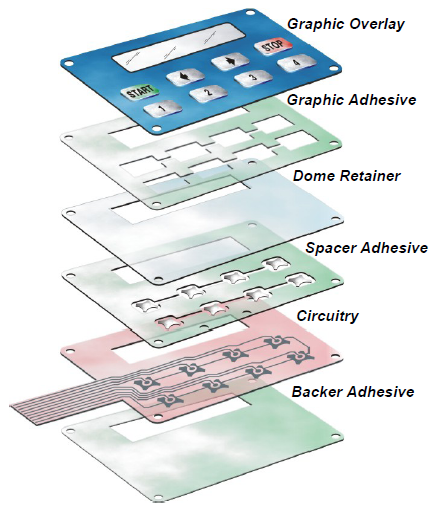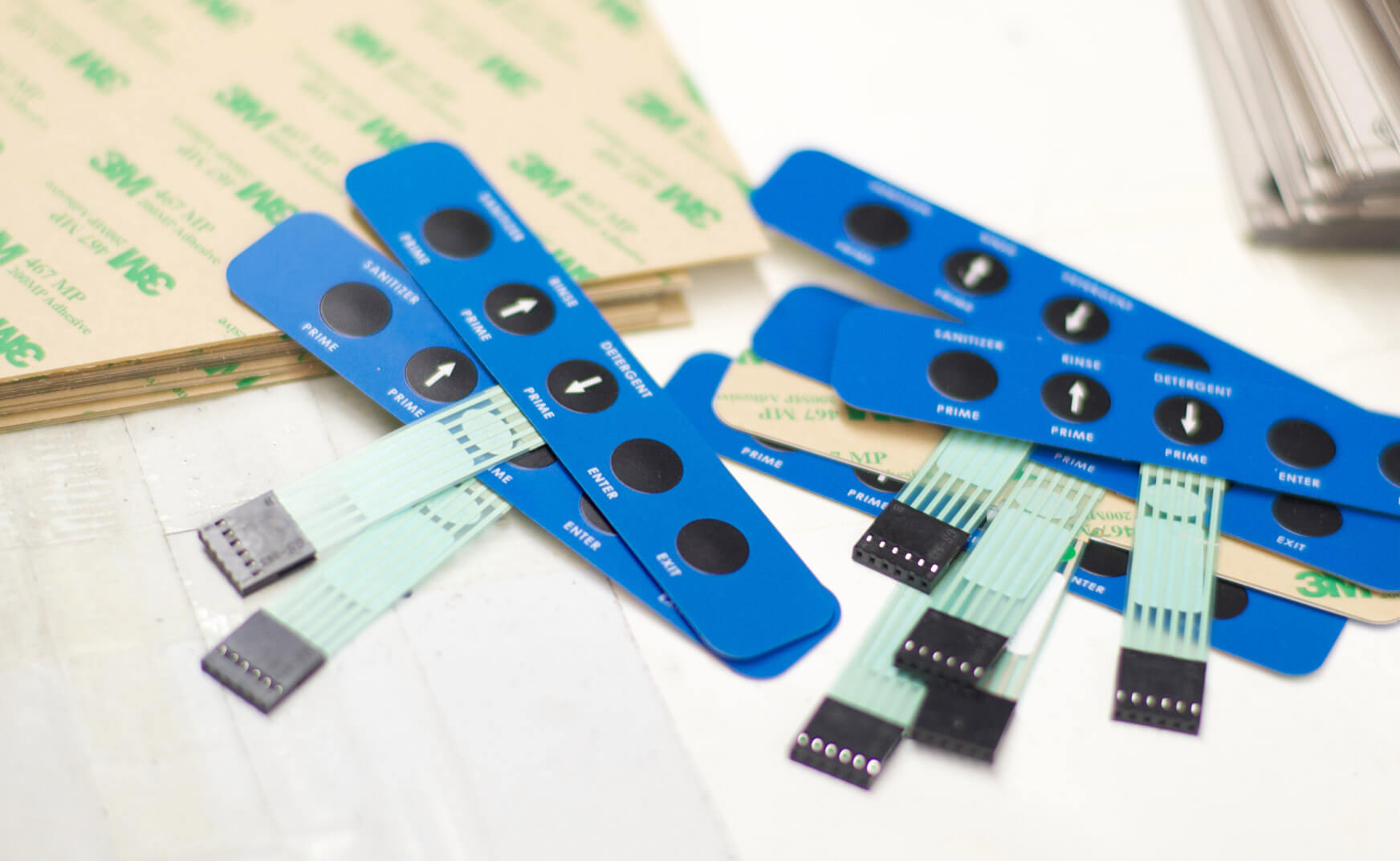A Comprehensive Guide to Membrane Switches for Product Designers
A Comprehensive Guide to Membrane Switches for Product Designers
Blog Article
Comprehending the Significance of Membrane Switches in Interface
Membrane buttons are important components in the design of reliable user interfaces, promoting not only capability but also improving visual charm and user communication. As we explore the future trends and different advantages connected with Membrane innovation, it comes to be clear that these buttons are more than just components; they represent a convergence of development and usefulness.
What Are Membrane Buttons?

The spacer layer, which contains glue homes, permits the splitting up of the circuit layer from the overlay, making certain that the switch stays in a non-activated state up until pressed. When pressure is related to the overlay, it presses the spacer layer, connecting the gap and completing the circuit in the underlying layer. This layout not only lowers the physical room required for standard mechanical switches yet likewise enhances the durability of the device, as Membrane buttons are normally resistant to dirt, wetness, and various other environmental variables.
Commonly located in applications ranging from consumer electronics to medical gadgets, Membrane switches are indispensable to contemporary technology, offering a straightforward and efficient user interface that aligns with modern design requirements.
Benefits of Membrane Buttons
While many switch modern technologies exist, Membrane Switches deal distinct advantages that make them specifically preferable in different applications. Among the primary advantages of Membrane buttons is their compact style, which permits space-saving applications in devices where genuine estate is restricted. Their thin account not only boosts visual allure but likewise helps with lightweight building.
An additional significant benefit is their resistance to ecological elements. Membrane buttons are typically sealed versus dampness, dirt, and contaminants, making them optimal for usage sought after atmospheres, such as clinical tools and commercial equipment. This sturdiness expands the life-span of the button, lowering maintenance prices and improving dependability.
Additionally, Membrane buttons can be tailored to fulfill specific design demands, incorporating one-of-a-kind graphics and colors that enhance individual interaction. Their responsive comments options can also be tailored to supply an enjoyable user experience. Furthermore, Membrane buttons are cost-efficient, particularly in high-volume applications, as they can be produced efficiently.
Applications in Various Industries

In the consumer electronics industry, Membrane switches are widespread in gadgets such as microwaves, washing devices, and remote controls. Their responsive feedback and visual options improve individual experience while supplying a sleek, modern-day appearance. Furthermore, auto manufacturers make use of Membrane switches in control panel controls and infomercial systems, where space is limited, and individual engagement is vital.
In addition, the commercial sector leverages Membrane switches in control panels for equipment and equipment, permitting instinctive operation in usually severe atmospheres. Their resistance to chemicals and wetness makes sure long life and integrity in these applications. Generally, the versatility of Membrane Switches adds considerably to their extensive usage, making them crucial in various technological domains.
Layout Factors To Consider for Membrane Buttons

When designing Membrane switches, numerous essential considerations should be thought about to ensure optimum functionality and customer experience. Firstly, the choice of materials is important; picking durable, high-quality substrates can enhance the switch's durability about his and resistance to ecological elements such as moisture and temperature level fluctuations.
Second of all, the layout of the graphic overlay ought to prioritize clarity and ease of use. Icons and message must be clear, and the design needs to facilitate intuitive interaction (membrane switches). Furthermore, responsive responses is crucial; including a responsive dome or other mechanisms can enhance the individual experience by supplying physical verification of activation
One more crucial aspect is the switch's electrical efficiency. Designers must make certain that the conductive traces are effectively developed to lessen resistance and prevent signal interference. This includes evaluating the needed actuation force and making certain compatibility with the electronic parts they will interface with.

Future Patterns in Membrane Innovation
As innovation remains to development, Membrane switches are positioned to evolve dramatically, driven by advancements in materials and making methods. One emerging fad is the unification of sophisticated materials, such as flexible substratums and conductive inks, which boost durability and decrease the general weight of Membrane switches. These materials not only enhance the tactile response yet also enable for the style of switches that can hold up against harsher ecological conditions.
Additionally, the combination of touch-sensitive innovations is changing standard Membrane Switches into even more interactive individual interfaces. Capacitive touch sensing units embedded within Membrane switch panels can provide a much more user-friendly and responsive individual experience, lining up with the growing demand for smooth, contemporary layouts browse around this site in customer electronic devices.
In addition, developments in printing strategies, such as digital and 3D printing, make it possible for fast prototyping and personalization of Membrane switches. This adaptability permits makers to react quicker to market demands and consumer choices.
Lastly, sustainability is becoming a substantial emphasis, with suppliers exploring environment-friendly products and processes. As these patterns unfold, the future of Membrane innovation guarantees boosted functionality, visual allure, and ecological obligation, solidifying their duty in advanced interface throughout different industries.
Verdict
In verdict, Membrane Switches stand for an important part in the style of customer interfaces, integrating capability with aesthetic versatility. As developments in modern technology continue, the development of Membrane switches is expected to further improve user interfaces, driving advancement and enhancing functionality in a significantly complex technical landscape.
Membrane switches are essential elements in the layout of efficient user interfaces, assisting in not just capability but also improving visual charm and customer interaction.Membrane Switches offer as a vital element in different user interfaces, promoting a seamless interaction site between individuals and digital gadgets.While many button modern technologies exist, Membrane Switches offer distinctive benefits that make them specifically preferable in different applications.Furthermore, Membrane switches can be customized to meet particular style demands, incorporating one-of-a-kind graphics and shades that boost customer communication.In verdict, Membrane Switches represent an important part in the design of customer interfaces, combining performance with visual adaptability.
Report this page